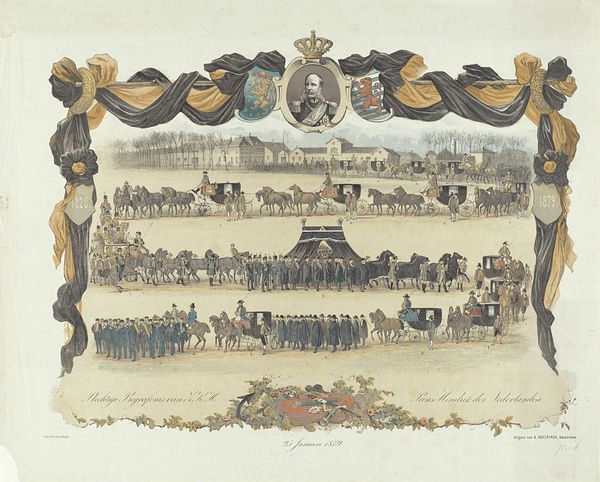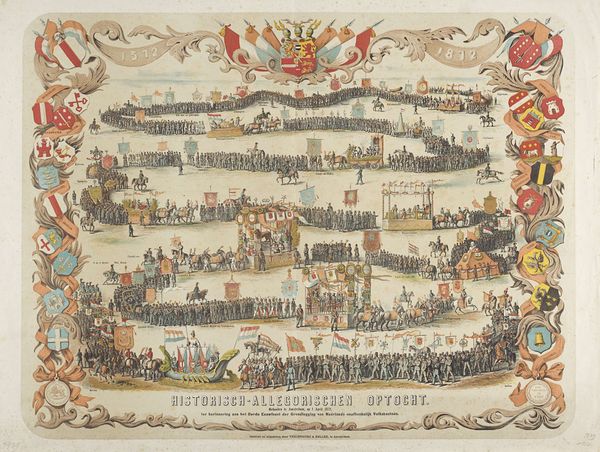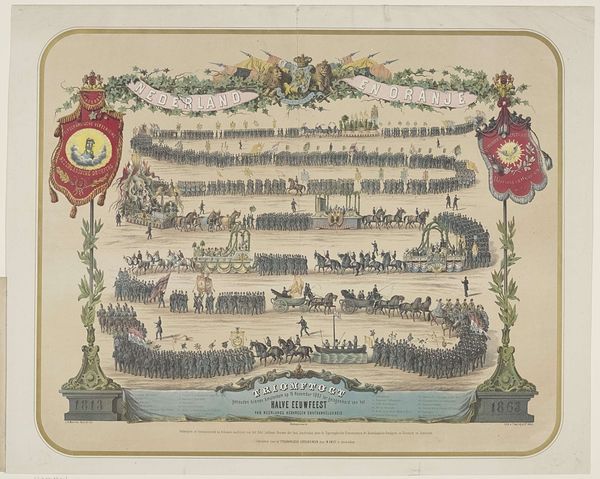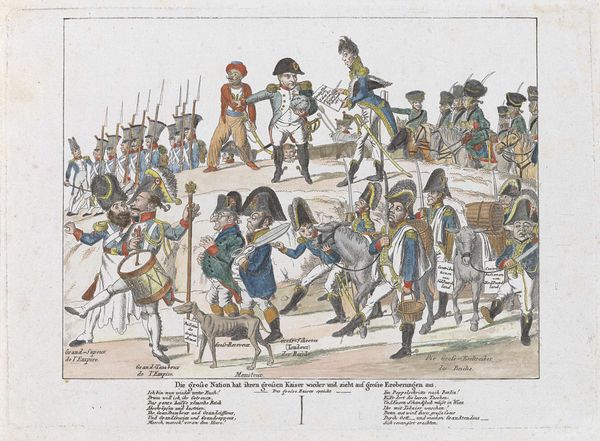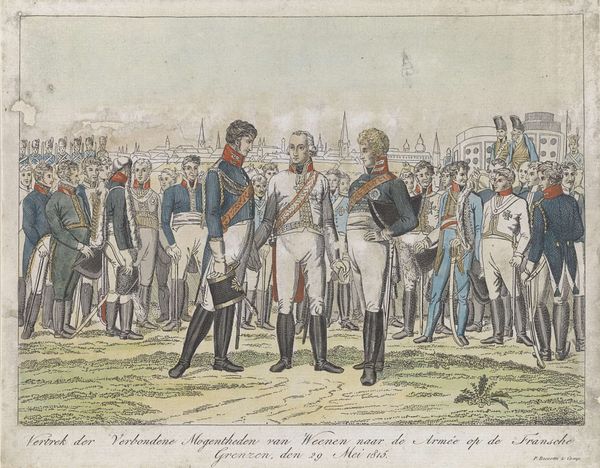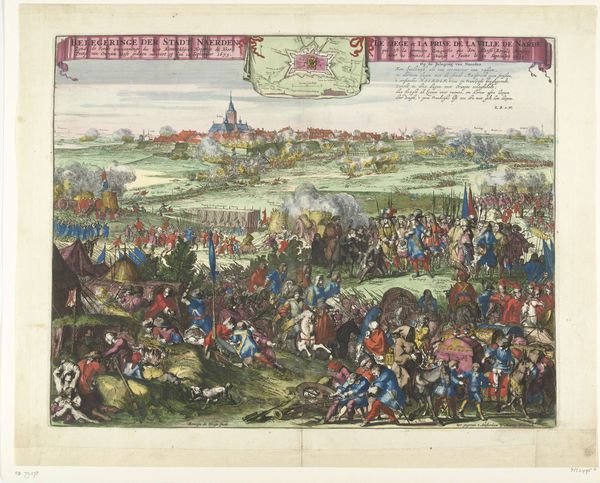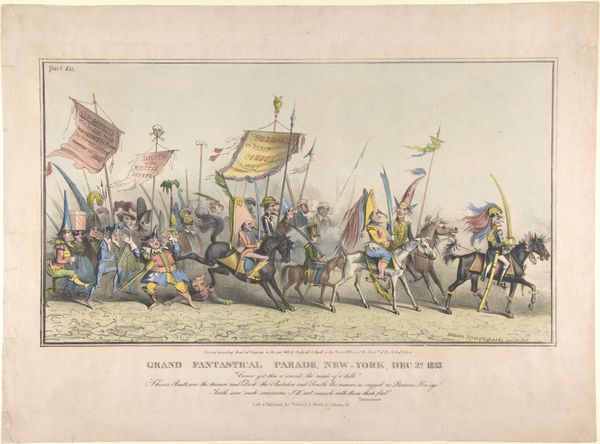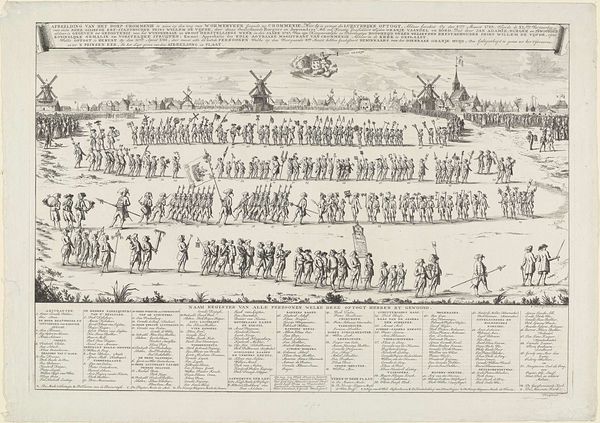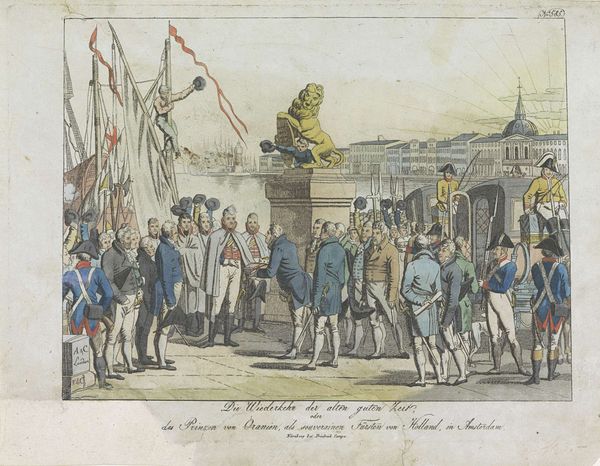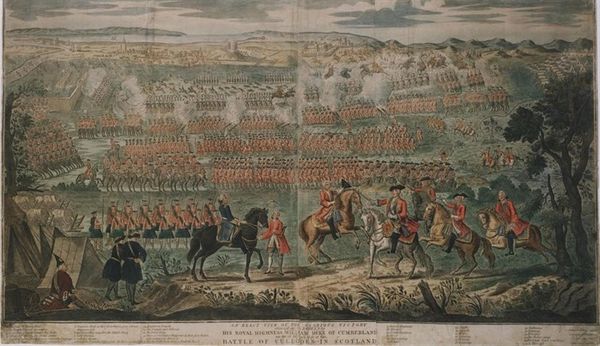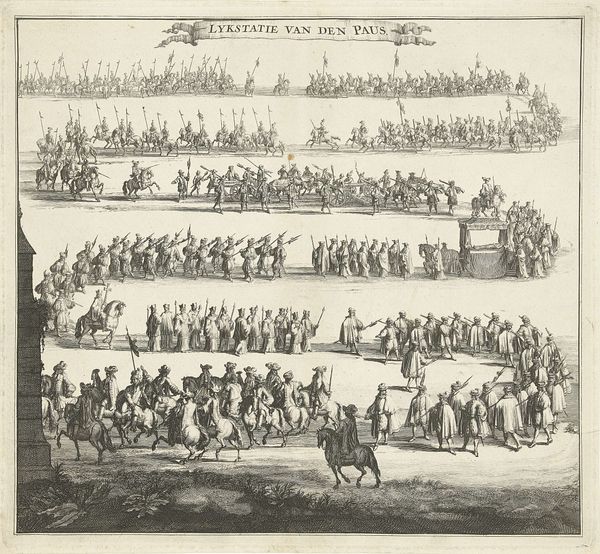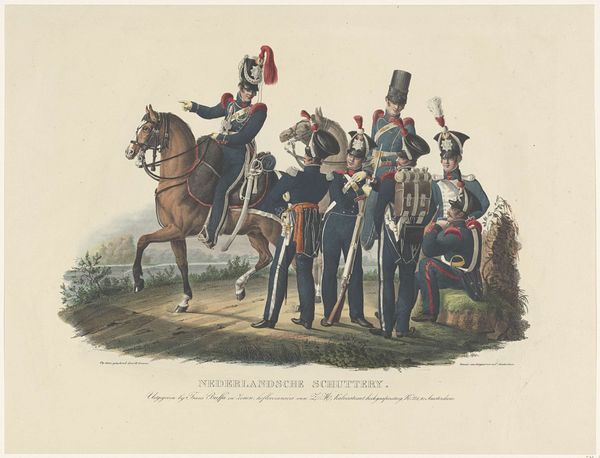
Plechtige Begrafenis van Z.M. Willem III, Koning der Nederlanden (...) 4 December 1890 1890 - 1891
0:00
0:00
Dimensions: height 594 mm, width 820 mm
Copyright: Rijks Museum: Open Domain
Editor: This is “Plechtige Begrafenis van Z.M. Willem III, Koning der Nederlanden,” a lithograph print from 1890-1891 by Emrik & Binger, depicting the funeral of King William III. The procession looks incredibly detailed and almost… staged. What’s your interpretation of this scene? Curator: The work offers insight into how monarchy visually asserts authority even in death. This lithograph served a specific public function. What do you notice about the presentation of the funeral procession itself? Editor: It’s so orderly, almost like a parade more than a solemn event. Everything seems carefully positioned. Curator: Exactly. Think about it – this isn’t just a depiction, but a construction of power. The print, distributed widely, reinforced the idea of a stable, well-ordered state even in the face of royal death. The emphasis isn’t just on mourning but on the continuity of the monarchy and its authority. Editor: So, the order and the formality aren’t just for showing respect, but also for projecting power to the public? Curator: Precisely. How else could it shape public perception of the monarchy? The print standardizes grief, turning personal loss into public ritual, thereby integrating citizens into a national narrative dominated by the royal family. Do you think Romanticism, as it is tagged, makes sense? Editor: It makes sense. The imagery is emotional, yes, but the romanticism seems more aligned to establishing an idealized legacy, as you mention, as much as, or more than it is for displaying authentic sorrow. Curator: Precisely, considering this helps in understanding how the socio-political environment shapes our view of such historical records and art’s role in these cultural dynamics.
Comments
No comments
Be the first to comment and join the conversation on the ultimate creative platform.
